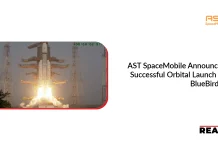Vigilant Aerospace Systems, the leading developer of multi-sensor airspace management and collision avoidance software for drones and advanced air mobility, has been awarded a $500,000 grant as part of a nearly $1 million project to work with the Oklahoma Aerospace Institute for Research and Education (OAIRE) at Oklahoma State University to develop a distributed version of its detect-and-avoid system.
The grant is provided by the Oklahoma Center for the Advancement of Science and Technology (OCAST). Vigilant Aerospace also won an OCAST grant in 2019 to work with OSU integrating new radars into its collision avoidance system.
The project addresses the challenges posed by the increasing number of uncrewed aircraft operating in the National Airspace System, including inspection and delivery drones, first responder drones, and larger air taxi and cargo drones. While these autonomous vehicles offer significant societal and economic benefits, they require new airspace management paradigms to ensure safe integration into the existing airspace and air traffic.
Also Read: Laser Interferometer Space Antenna (LISA) Project gets Help from PI Hexapod Alignment Systems
Vigilant Aerospace provides the software and networked sensors and radars to allow uncrewed aircraft to safely fly long distances and beyond the visual line-of-sight (BVLOS) of the pilot – which is essential to enabling the next generation of aviation.
“Vigilant Aerospace is an industry leader developing crucial technology for aviation safety right here in Oklahoma,” said Dr. Jamey Jacob, OAIRE executive director. “The ability for drones and larger autonomous vehicles to detect and avoid collisions with other aircraft is critical for the future of aviation and for multiple efforts throughout the nation. Projects like this keep Oklahoma at the forefront of the industry, while supporting innovative local businesses. This initiative has far-reaching impact as a wide range of autonomous aircraft take to the air.”
SOURCE:PRNewswire




